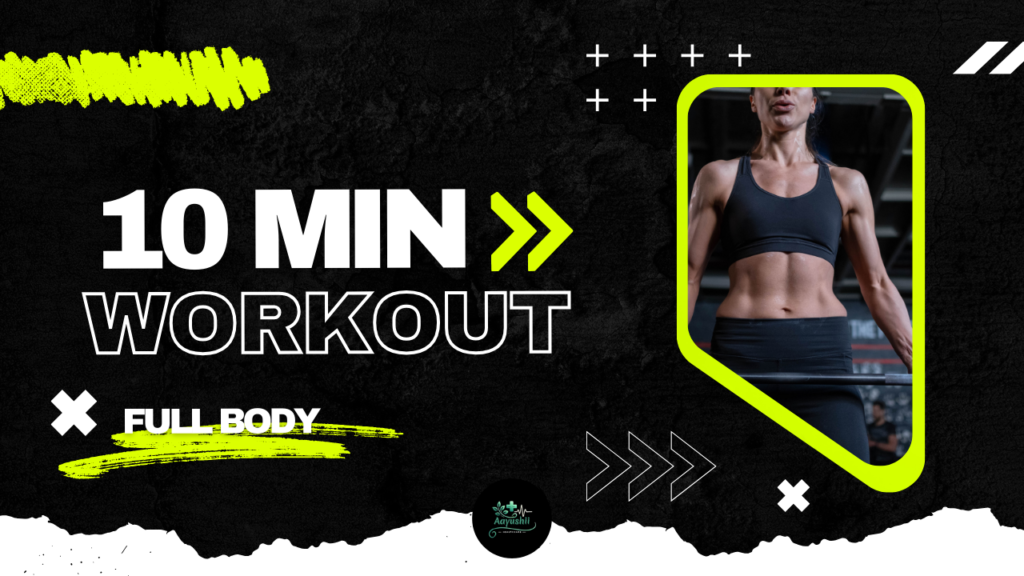In this comprehensive guide, we’ll explore everything you need to know about 10-minute morning workouts, including their health benefits, scientific background, practical tips, and detailed examples. By the end of this article you’ll have a full understanding of how to incorporate short, effective morning workouts into your daily routine and reap the benefits of a stronger, healthier, and more energetic lifestyle.
Table of Contents
Why 10-Minute Morning Workouts Matter

Starting your day with a short workout can revolutionize your morning routine. In a world where many of us lead busy lives packed with responsibilities, finding time for exercise might seem challenging. However, a well-structured 10-minute morning workout can be an efficient, low-barrier way to boost your metabolism, support weight management, improve mental clarity, and set the tone for a productive day.
Whether you’re a fitness enthusiast or a beginner, focusing on short, consistent routines can provide significant benefits over time. You don’t need to spend hours at the gym or purchase expensive equipment. With just 10 minutes, you can increase blood flow, release endorphins, and prime your body for the day’s tasks.
Health and Lifestyle Benefits of Morning Exercise

1. Scientific Reasons to Work Out in the Morning
- Circadian Rhythms
Your body operates on a 24-hour cycle called the circadian rhythm, which influences hormone release, energy levels, and bodily functions throughout the day. Early morning exercise can help regulate your internal clock, improve sleep quality at night, and keep your hormones balanced. - Improved Metabolic Rate
Exercise, particularly in the morning, can induce an “afterburn” effect known as Excess Post-Exercise Oxygen Consumption (EPOC). This essentially means your body burns more calories even after you’ve finished working out. High-intensity exercise (like HIIT) maximizes the EPOC effect, but moderate-intensity morning workouts also positively influence your metabolism. - Blood Sugar Regulation
Research suggests morning workouts may help regulate blood sugar and insulin sensitivity more effectively than workouts scheduled later in the day. Maintaining stable blood sugar levels is essential for overall health and can play a role in weight management and the prevention of chronic diseases.
2. Physical Benefits
- Increased Flexibility and Mobility
While many people feel stiff upon waking, gentle movement and dynamic stretching in the morning can help loosen up muscles and improve overall flexibility. Starting the day this way can reduce the risk of injury, particularly for desk-bound individuals or those engaged in repetitive tasks during the day. - Enhanced Strength and Endurance Over Time
Even short bursts of exercise can lead to gradual improvements in muscle strength, cardiovascular endurance, and overall fitness when practiced consistently. If you consistently exercise for 10 minutes every morning, you’ll likely see improvements in your ability to perform daily tasks, as well as better performance in other sports or activities you enjoy. - Better Weight Management
Although 10 minutes might not sound like much, regular short workouts can contribute to increased daily caloric expenditure. Paired with a balanced diet and mindful eating, 10-minute morning workouts can be an effective tool in supporting or accelerating healthy weight loss or weight maintenance. - Reduced Muscle Tension
One of the best ways to alleviate muscle tension and sore spots is to increase blood flow through light exercise. Stretching and dynamic movements in the morning target tight muscles, promoting better posture and fewer aches throughout the day.
3. Mental and Emotional Benefits
- Boosted Mood and Reduced Stress
Physical activity releases endorphins, often called “feel-good hormones,” which can enhance mood and reduce stress levels. Beginning your day with endorphin-boosting movement can set a positive emotional tone that lasts for hours. - Increased Mental Clarity
Many people find that exercising in the morning helps them feel more alert and focused. This increased mental clarity can translate into improved productivity and better decision-making both at work and in personal tasks. - Greater Sense of Accomplishment
Starting your day with an achievement—like completing a workout—creates a sense of progress right away. It lays a foundation of confidence and motivation that carries over into other parts of your life, encouraging healthier habits like mindful eating or keeping a tidy living space. - Enhanced Stress Management Throughout the Day
When you begin your day with even a short bout of physical movement, you train your body and mind to handle stress more effectively. Regular exercise has been shown to strengthen resilience, reduce anxiety, and improve emotional regulation.
Getting Started: Setting Goals and Adopting the Right Mindset

1. Assess Your Current Fitness Level
Before you jump right into a morning workout routine, it’s essential to gauge where you stand physically. This doesn’t require a comprehensive fitness exam; a quick self-assessment can suffice:
- Cardiovascular Endurance: Can you climb a flight of stairs without feeling exhausted?
- Muscular Strength and Endurance: How many push-ups or squats can you comfortably perform?
- Flexibility: Can you touch your toes or rotate your torso without discomfort?
Understanding your current fitness capacity enables you to choose exercises and intensity levels that are both challenging and safe.
2. Setting Realistic Goals
Many people aim too high and too fast when starting a new exercise routine, leading to burnout or injury. Instead, focus on creating goals that follow the SMART principle:
- Specific: Define what you want to accomplish (e.g., “I want to do 20 push-ups in one set.”).
- Measurable: Ensure your goal can be tracked (e.g., “Increase push-ups by 1 every week.”).
- Achievable: Keep it within a realistic range given your current fitness level.
- Relevant: Align your goals with your personal needs (e.g., building upper body strength).
- Time-Bound: Set a deadline to stay motivated and measure progress.
With 10-minute workouts, your initial goal may simply be consistency—like doing them five days a week for a month. Over time, as you get used to these short sessions, you can add new challenges or vary the exercises to continue making progress.
3. Overcoming Mental Barriers
Despite the short duration of a 10-minute workout, mental barriers often remain the biggest hurdles. Common mental roadblocks include:
- “I don’t have time.”
In reality, everyone can carve out 10 minutes—even on busy days. Recognizing that 10 minutes is better than nothing can help overcome this excuse. - “I’m too tired in the morning.”
Ironically, a brief workout can fight morning fatigue by improving circulation and alertness. Often, getting started is the hardest part, but you’ll feel more energized once you begin. - “I’m not seeing results fast enough.”
Consistency is key. It may take a few weeks for noticeable changes in strength or endurance. Remember that small steps add up over time to significant results. - “I don’t know where to start.”
This guide aims to address exactly that concern, offering various 10-minute routines that you can pick based on your preferences and goals.
Designing Your 10-Minute Workout Routine
1. The Importance of a Warm-Up
A warm-up is crucial to prepare your body for movement and reduce the risk of injuries. Even though you only have 10 minutes to spare, investing 1–2 minutes in a good warm-up can significantly boost the quality of your workout and protect your muscles and joints. Effective warm-ups might include:
- Dynamic Stretches: Arm circles, hip rotations, ankle rolls, etc.
- Light Cardio: Marching in place, jogging on the spot, or jumping jacks for 30 seconds to 1 minute.
- Mobility Drills: Simple exercises to mobilize key joints like the shoulders, hips, and spine.
2. Core Elements of a 10-Minute Workout
When planning a 10-minute workout, you need to maximize efficiency. Here are key considerations:
- Compound Movements
Opt for exercises that engage multiple muscle groups at once. Moves like squats, lunges, push-ups, planks, and burpees are excellent because they build strength and raise your heart rate quickly. - High Intensity (If Suitable)
If you’re comfortable with higher-intensity training, incorporate short bursts of maximum effort, interspersed with brief rest or lower intensity periods. High-Intensity Interval Training (HIIT) is particularly effective in short sessions. - Structured Intervals
To ensure you stay on track, consider using timed intervals—for example, 30 seconds of work followed by 10 seconds of rest. This keeps your workout organized and easy to follow. - Variety
Rotate between different exercise modalities (HIIT, yoga, bodyweight exercises, core-focused routines) to avoid boredom and target different muscle groups.
3. Cool-Down and Stretching
Even in a 10-minute workout, it’s wise to allocate the final 1–2 minutes to cooling down. Light stretching lowers your heart rate gradually, helps prevent blood from pooling in the extremities, and may reduce post-workout soreness. Focus on major muscle groups used during your routine—quadriceps, hamstrings, back, chest, and shoulders. Remember to breathe deeply and steadily during each stretch to facilitate relaxation.
Types of 10-Minute Morning Workouts
1. High-Intensity Interval Training (HIIT)
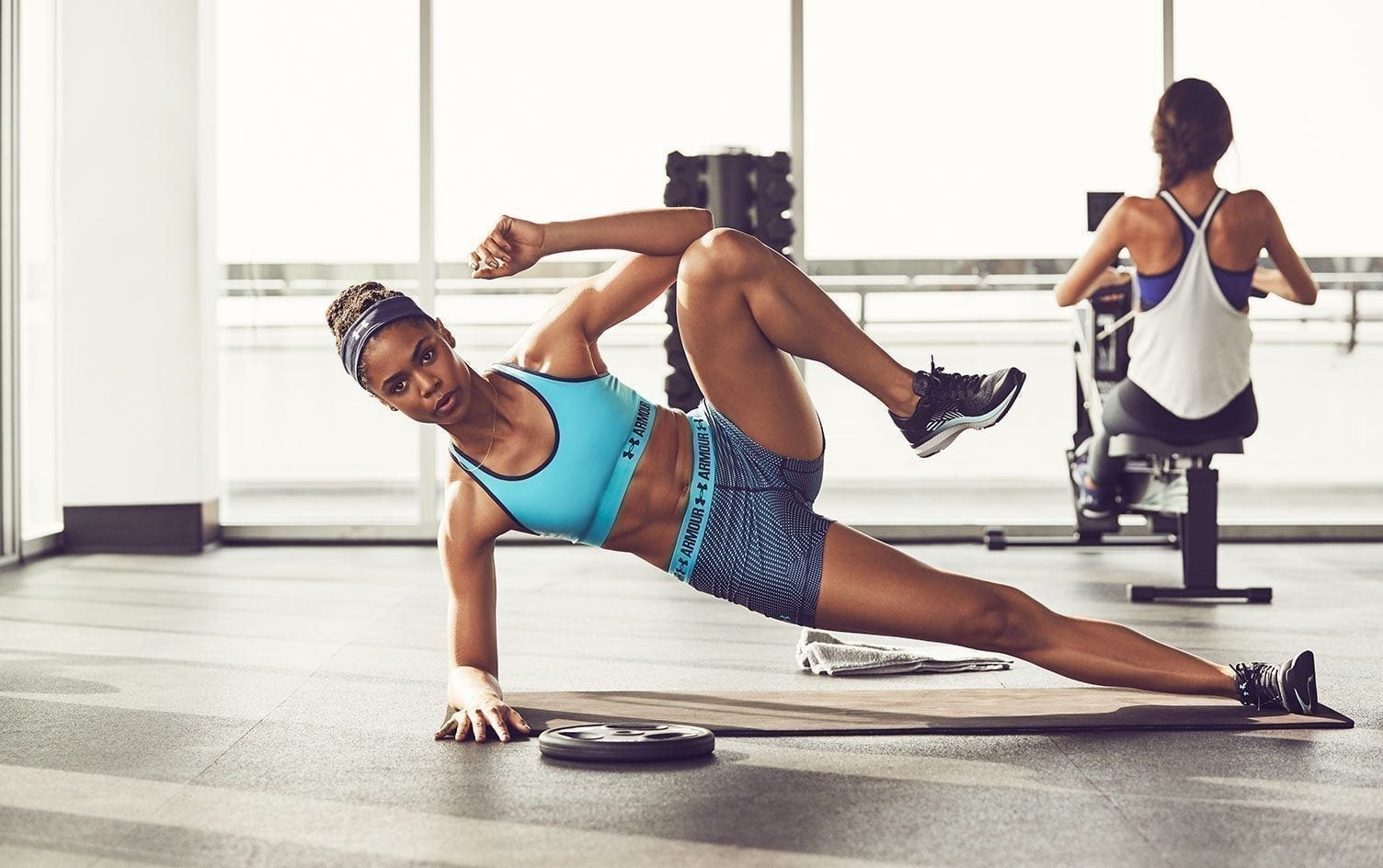
HIIT involves short, intense bursts of exercise followed by brief rest periods or low-intensity intervals. This form of training elevates your heart rate quickly, encourages fat burning, and can be adapted to almost any fitness level. HIIT is popular for morning workouts because it can deliver maximum results in a minimal amount of time.
Common Exercises
- Burpees
- Mountain climbers
- High knees
- Jump squats
- Plank jacks
Benefits
- Significant calorie burn in a short time
- Improves both aerobic and anaerobic fitness
- Boosts metabolism for hours post-workout
2. Yoga Flow for Mornings
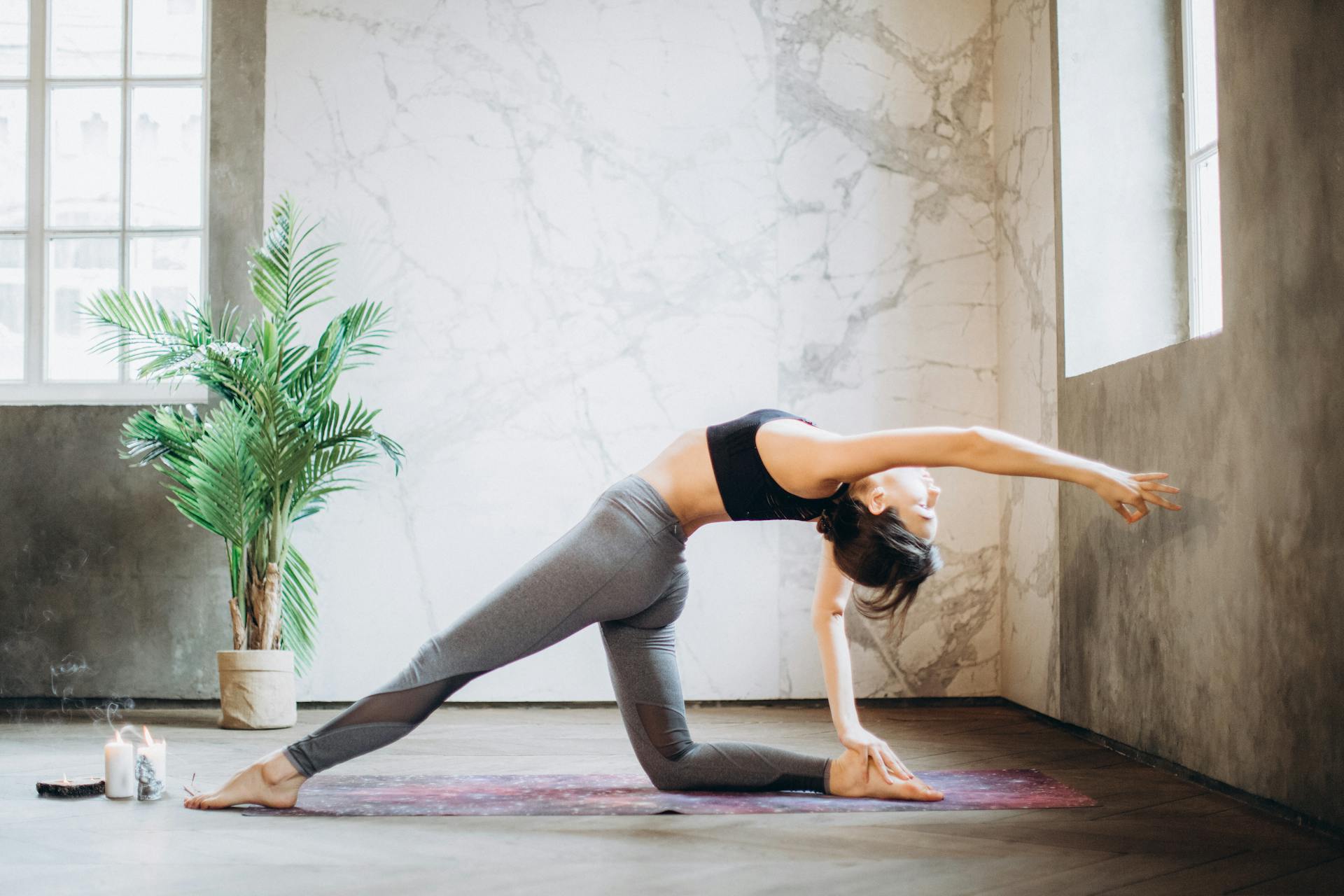
A gentle or moderate-intensity yoga practice can be perfect for waking up your body and calming the mind. Yoga focuses on breath control, flexibility, and mindfulness, providing a stress-relieving yet invigorating start to the day.
Key Poses
- Sun Salutations (Surya Namaskar)
- Downward-Facing Dog (Adho Mukha Svanasana)
- Cat-Cow (Marjaryasana-Bitilasana)
- Standing Forward Fold (Uttanasana)
- Low Lunge (Anjaneyasana)
Benefits
- Improves flexibility and posture
- Reduces morning stiffness and tension
- Encourages mindful breathing and reduces stress
3. Bodyweight Circuits
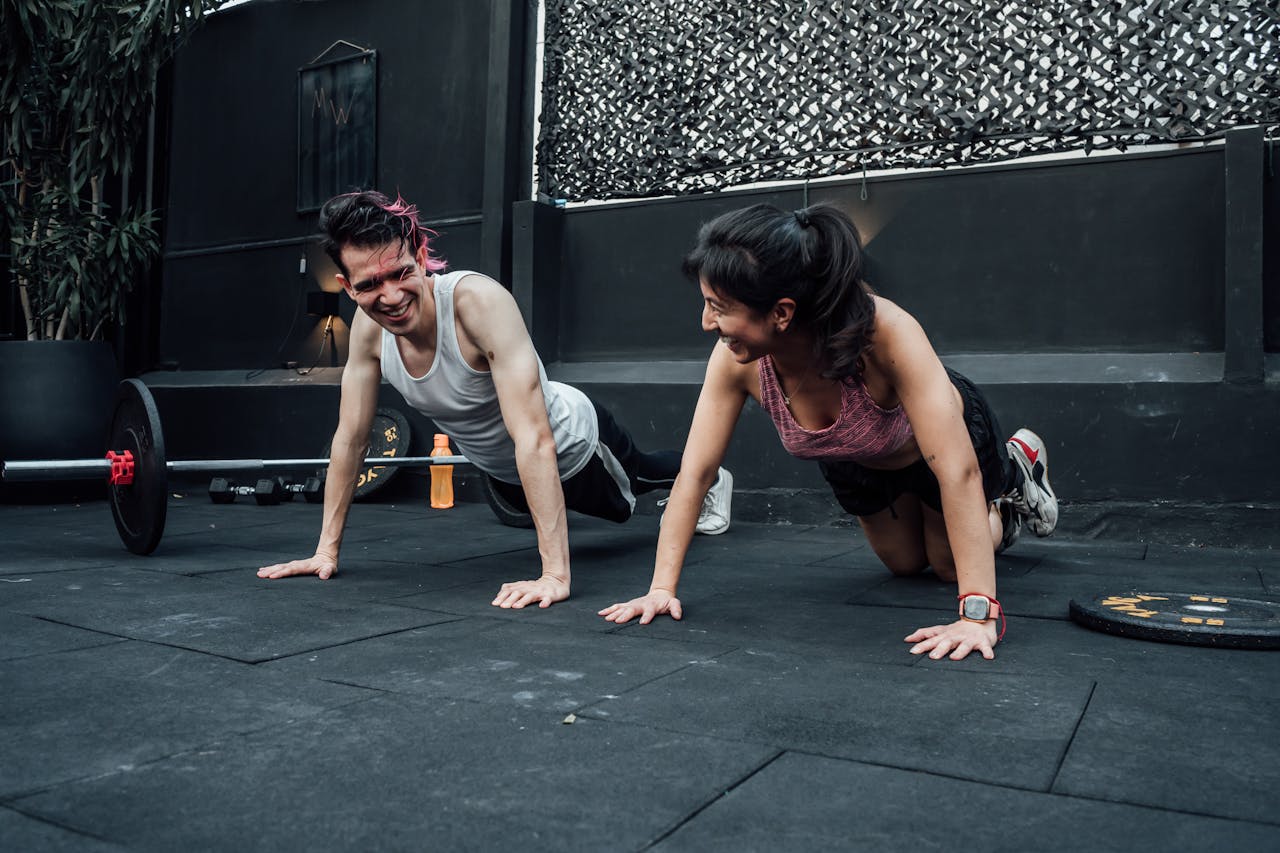
Bodyweight circuits combine classic, equipment-free exercises in quick succession. They are excellent for improving muscular strength, endurance, and cardiovascular health without the need for any machines or weights.
Common Exercises
- Push-ups
- Squats
- Lunges
- Planks
- Glute bridges
Benefits
- Builds functional strength
- Easily scalable by adjusting reps or changing exercise variations
- Minimal space and zero equipment needed
4. Core-Focused Routines
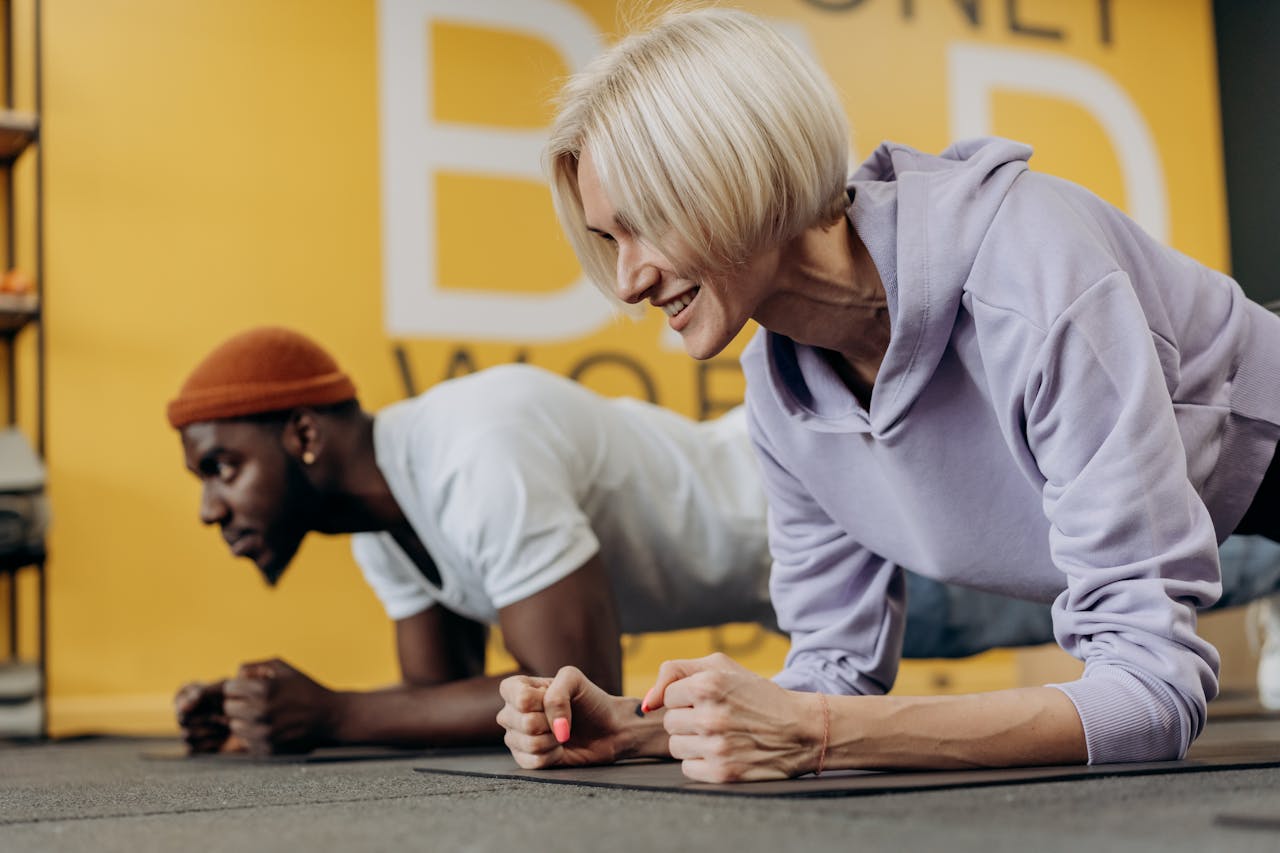
Core routines concentrate on strengthening the abdominal and lower back muscles, which are crucial for stability, posture, and daily movements. A strong core also supports better performance in other exercises.
Common Exercises
- Plank variations (forearm plank, side plank)
- Crunches (standard, bicycle, reverse)
- Dead bug
- Superman
- Mountain climbers (with a slow, controlled tempo)
Benefits
- Better posture and reduced lower back pain
- Improved balance and coordination
- Enhanced performance in sports and other exercises
5. Light Cardio and Aerobic Exercises

Light cardio routines can involve brisk walking, jogging in place, dance-inspired moves, or simple low-impact exercises that raise your heart rate without heavily straining your joints. This is perfect for beginners or those looking for an easy, consistent routine.
Common Exercises
- Marching in place
- Low-impact jumping jacks (step jacks)
- Step-ups (using a small bench or stair)
- Light shadowboxing
Benefits
- Increases heart rate to a moderate level, improving cardiovascular health
- Gentle on joints
- Can be done indoors with minimal space
6. Mobility and Stretching Sequences
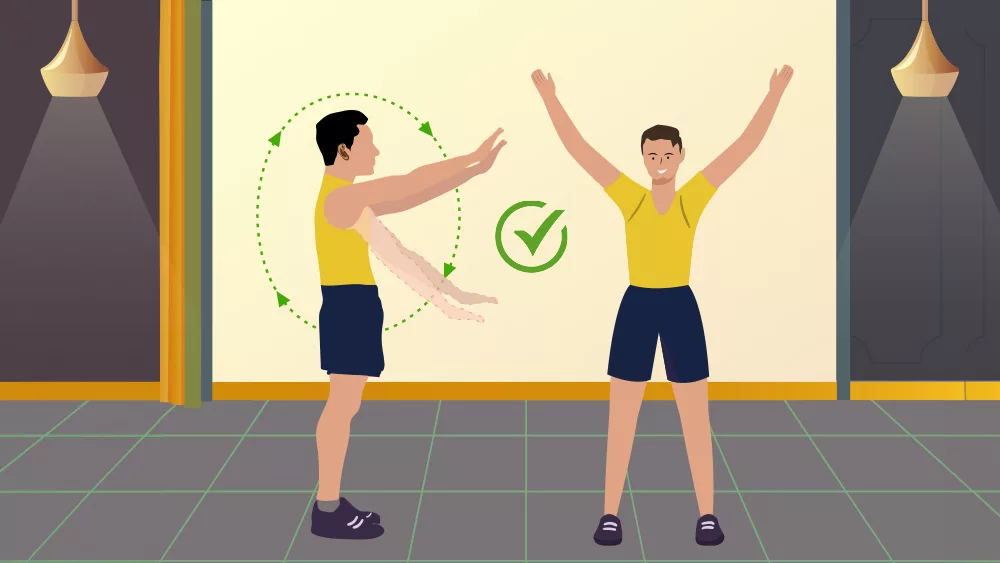
For those who already engage in more intense exercise later in the day or who simply want to shake off morning stiffness, a mobility-focused routine can be ideal. These exercises promote joint health, ease tension, and prepare you for daily tasks or later workouts.
Key Techniques
- Arm and hip circles
- Dynamic leg swings
- Spinal rotations
- Neck rolls and shoulder shrugs
- Seated forward folds for hamstrings
Benefits
- Reduces injury risk by improving joint range of motion
- Alleviates aches from sleeping in awkward positions
- Enhances posture and relaxation
Detailed Routine Examples (Step by Step)

Below are three sample routines, each with a distinct focus. Adapt them to suit your fitness level replacing high-impact moves with low-impact variations, or increasing rest times if needed.
Example 1: Bodyweight HIIT Blast
Target Audience: Intermediate exercisers comfortable with higher-intensity movements.
- Warm-Up (1–2 minutes)
- Arm Circles (20 seconds): Extend arms to the sides and make small circles, gradually enlarging them.
- Hip Rotations (20 seconds): Stand with feet shoulder-width apart, place hands on hips, and rotate hips in a circular motion one way, then the other.
- March in Place (20 seconds): Lift your knees to hip level, swinging your arms for momentum. Increase speed gradually.
- Workout (6–7 minutes)
- Burpees (30 seconds): From a standing position, squat down, place hands on the floor, jump your feet back to a plank, perform a push-up (optional), then jump feet back and explode upward.
- Rest or March in Place (15 seconds)
- Jump Squats (30 seconds): Perform a squat, then jump up explosively, landing softly back into a squat. For a low-impact version, skip the jump and rise onto your toes.
- Rest or March in Place (15 seconds)
- Mountain Climbers (30 seconds): Begin in a plank position; drive one knee toward the chest, then switch legs quickly.
- Rest or March in Place (15 seconds)
- Plank (30 seconds): Keep your body in a straight line, elbows under shoulders, and tighten your core.
- Rest or March in Place (15 seconds)
- High Knees (30 seconds): Run in place while driving knees up to waist level as fast as you can.
- Rest or March in Place (15 seconds)
- Repeat the Sequence if Time Allows.
- Cool-Down and Stretch (1–2 minutes)
- Child’s Pose (30 seconds): Kneel on the floor, sit back on your heels, and stretch your arms forward.
- Standing Quad Stretch (30 seconds each leg): Grasp one foot behind you and pull it gently toward your glutes, keeping knees together.
Total Time: About 10 minutes.
Example 2: Quick Energizing Yoga Flow
Target Audience: All levels, especially those who prefer a mindful, lower-intensity morning routine.
- Warm-Up (1–2 minutes)
- Seated Breathing (30 seconds): Sit cross-legged, close your eyes, and take slow, deep breaths.
- Cat-Cow (30 seconds): Kneel on all fours, arch your back upward (cat), then lower your belly and lift your head (cow).
- Workout (6–7 minutes)
- Sun Salutation A (3–4 minutes):
- Mountain Pose (Tadasana) – Stand tall, arms by your sides.
- Inhale, sweep arms overhead.
- Exhale, fold forward (Uttanasana).
- Inhale, lift halfway with a flat back.
- Exhale, step or jump back into Plank Pose.
- Lower down through Chaturanga (optional knees down).
- Inhale, Upward-Facing Dog or Cobra.
- Exhale, Downward-Facing Dog; hold for 3–5 breaths.
- Step or jump to the front of the mat, fold forward, then return to Mountain Pose.
- Repeat 2–3 times at a steady, mindful pace.
- Warrior II (30 seconds each side): Step one foot back, bending the front knee, arms extended at shoulder level. Gaze over the front hand.
- Triangle Pose (30 seconds each side): Straighten front leg, hinge from hips, and extend one arm down along the leg and the other arm overhead.
- Sun Salutation A (3–4 minutes):
- Cool-Down and Stretch (1–2 minutes)
- Standing Forward Fold (20 seconds): Fold deeply with soft knees.
- Child’s Pose (20 seconds): Return to the floor and rest.
- Seated Spinal Twist (20 seconds each side): Sit upright, cross one foot over the other leg, and twist gently from the waist.
Total Time: About 10 minutes.
Example 3: Core and Abs Focus
Target Audience: Those looking to strengthen their core, from beginners to intermediate level.
- Warm-Up (1–2 minutes)
- Pelvic Tilts (20 seconds): Lie on your back, knees bent. Tilt your pelvis upward, pressing your lower back into the floor, then release.
- Bird Dog (30 seconds): Kneel on all fours, extend your right arm and left leg, then switch sides.
- Workout (6–7 minutes)
- Forearm Plank (30 seconds): Maintain a straight line from shoulders to heels, engaging your core.
- Rest (15 seconds)
- Bicycle Crunches (30 seconds): Lie on your back, hands behind your head, bring opposite elbow to knee, alternating sides.
- Rest (15 seconds)
- Side Plank (30 seconds each side): Stack your feet or keep them staggered, resting on one forearm, hips lifted.
- Rest (15 seconds)
- Dead Bug (30 seconds): Lie on your back, arms raised, knees bent at 90 degrees. Extend opposite arm and leg outward, then switch sides.
- Rest (15 seconds)
- Reverse Crunch (30 seconds): Lie on your back, hands by your sides, knees bent. Lift your hips off the floor and bring your knees toward your chest.
- Cool-Down and Stretch (1–2 minutes)
- Happy Baby Pose (30 seconds): Lie on your back, grab the insides of your feet or ankles, and gently rock from side to side.
- Supine Twist (20 seconds each side): Extend one leg, cross the other over your body, turning your head in the opposite direction.
Total Time: About 10 minutes.
Tips to Make the Most Out of Your 10-Minute Workout
- Prepare the Night Before
Lay out your workout clothes or yoga mat in advance. By having everything ready, you reduce morning friction and make it easier to jump into your workout. - Use a Timer or Workout App
Timing intervals or tracking your reps keeps you focused. Plenty of free apps can guide you through an interval-based session or let you log your progress. - Set Multiple Alarms
If you struggle to wake up, set an alarm 15 minutes earlier than usual. Give yourself time to transition from sleep to movement. Another alarm could act as a final “get moving” reminder. - Stay Hydrated
Drink a glass of water soon after waking up. Dehydration can hamper performance and lead to fatigue. Even a single glass helps replenish fluids lost overnight. - Experiment with Breathing Techniques
Deep, controlled breathing during exercise can improve your performance, help manage heart rate, and enhance relaxation. In yoga routines, inhaling and exhaling at the right times can greatly deepen stretches and maintain focus. - Stay Consistent
Consistency trumps intensity when building a habit. Even on days you feel sluggish, try a light workout or a simple mobility routine. Doing something is always better than skipping altogether. - Progress Over Perfection
Expect fluctuations in your energy levels and performance. Focus on small improvements—like doing one more push-up or holding a plank a few seconds longer—to keep motivation high. - Tailor to Your Preferences
If you hate burpees, swap them out for a similar full-body move like squat jumps. If you love music, craft a short, energetic playlist to accompany your workout. Personalizing your routine keeps you engaged.
Common Mistakes to Avoid
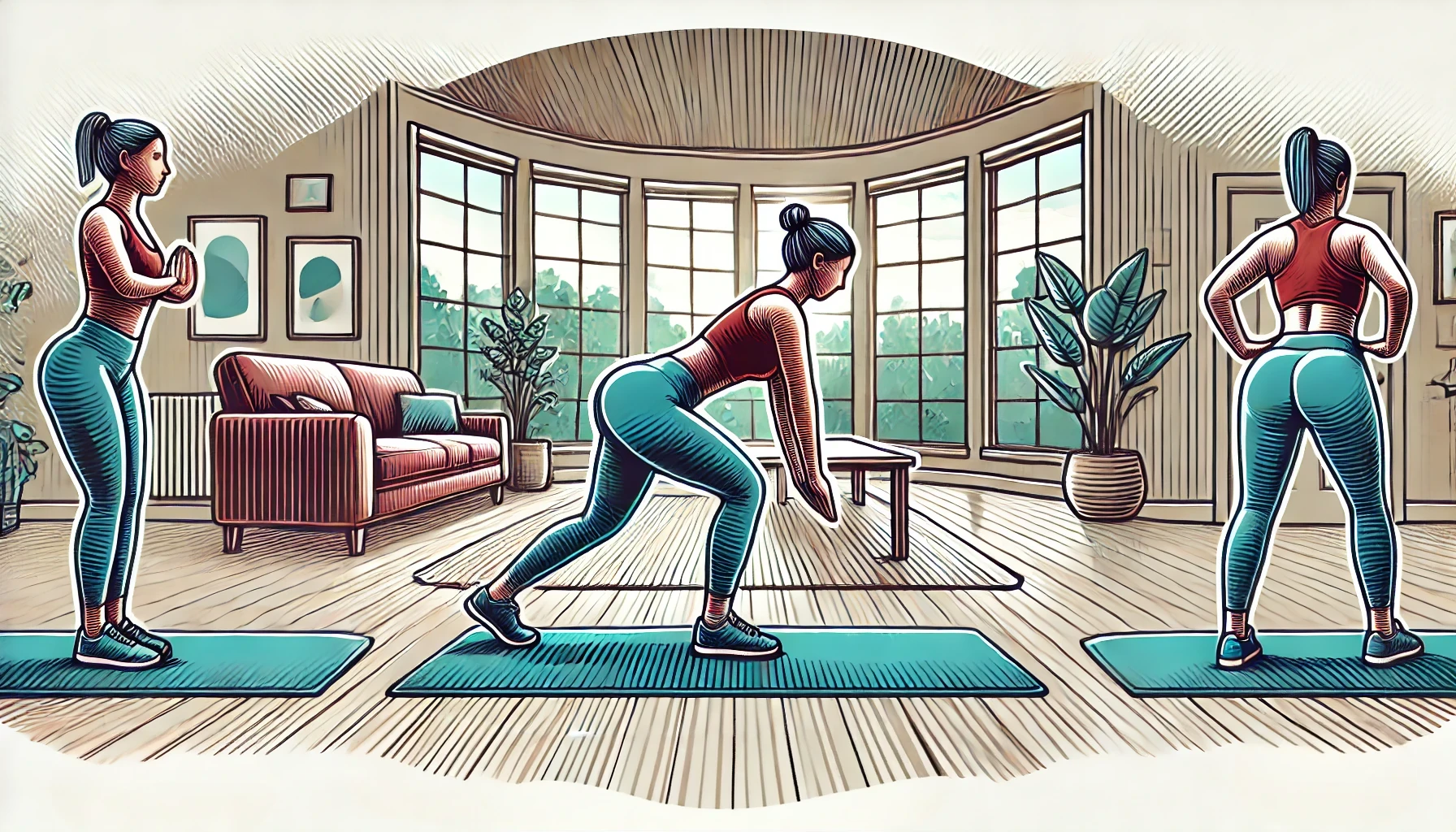
- Skipping the Warm-Up
It’s tempting to skip the warm-up to save time, but diving into high-intensity moves cold can lead to injury. Even 30 seconds of light activity to warm muscles is essential. - Pushing Too Hard, Too Soon
Overexertion in the early stages can result in burnout or injury. Start with moderate intensity and gradually increase the challenge. - Neglecting Form
Proper form ensures you target the correct muscle groups and avoid unnecessary strain. In a short workout, it’s easy to rush. Take time to learn each exercise correctly. - Not Stretching Afterward
The cool-down phase helps your body transition from exercise to rest. Skipping it can cause muscle tightness or dizziness. - Lack of Consistency
Doing a 10-minute workout randomly once or twice a week won’t yield notable benefits. Consistency—aiming for at least 4–5 times a week—makes short workouts truly effective. - Underestimating Recovery
Even short workouts place demands on your muscles. Ensure you get adequate sleep, stay hydrated, and maintain balanced nutrition for optimal recovery.
Frequently Asked Questions (FAQ)
- Is 10 minutes of exercise really enough?
Yes, especially if you’re a beginner or have a busy schedule. While longer workouts can provide more significant gains, 10 minutes of focused, high-quality exercise can still deliver improvements in cardiovascular health, strength, and mental well-being when done consistently. - What if I don’t have much space at home?
Most 10-minute routines are space-efficient and require minimal or no equipment. Exercises like squats, push-ups, planks, and lunges can be performed in just a few square feet of space. - Can I do morning workouts on an empty stomach?
Many people successfully exercise in a fasted state, especially with short workouts. However, if you feel dizzy or weak, consider having a small snack like a piece of fruit or a handful of nuts beforehand. - How soon can I expect results?
This depends on several factors, including diet, consistency, and current fitness level. Typically, you may notice improved energy levels and mood within days. Visible changes like muscle definition or weight loss can take a few weeks to a few months of consistent effort. - Should I combine these 10-minute workouts with other routines?
Absolutely. If you enjoy different forms of exercise, integrating short morning workouts with longer sessions later in the day or on weekends can accelerate progress. - Is it okay to do the same routine every day?
It’s more beneficial to vary your workouts to avoid muscle adaptation and to keep things interesting. Rotate between HIIT, yoga, core, and stretching routines for well-rounded fitness. - I have certain medical conditions; can I still do these workouts?
If you have medical concerns, consult a healthcare professional before starting any new exercise regimen. They can guide you on specific modifications or exercises to avoid. - What if I miss a day?
Missing one day is not detrimental. Return to your routine the following day and continue being consistent. Long-term sustainability is what matters most.
Conclusion
A 10-minute morning workout may sound modest, but it can be a game-changer for your health, energy levels, and overall well-being. By embracing short, regular exercise sessions, you commit to daily self-improvement without overhauling your schedule. Whether you choose a burst of high-intensity interval training, a mindful yoga flow, or a core-strengthening circuit, consistency is the secret ingredient that turns these mini-workouts into powerful catalysts for change.
Remember, the true power of a 10-minute workout lies in its simplicity and accessibility. You don’t need fancy equipment or an hour-long block of free time. All you need is a small space, a little motivation, and the willingness to push through those early-morning groans. Over time, these small efforts accumulate, leading to tangible improvements in strength, flexibility, mood, and overall health.
So tomorrow, when your alarm goes off, take a deep breath, remind yourself of your goals, and start the day with 10 minutes of focused movement. By consistently integrating these short routines into your morning ritual, you’ll not only kickstart your day in the best way possible but also lay the groundwork for a healthier, more vibrant lifestyle—one sunrise at a time.

